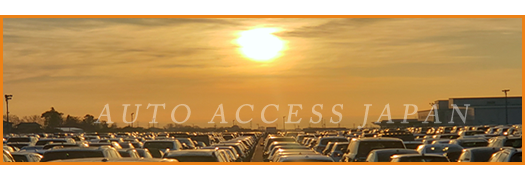Auction Sheets Explained
Auction sheets can be confusing to read and understand, but we are here to help you through the process.
This section explains the basics of how the auction sheets are set out and what to look for when deciding on a used car to request a translation for.
Auction sheet layouts do vary depending on the auction house.
This section explains the basics of how the auction sheets are set out and what to look for when deciding on a used car to request a translation for.
Auction sheet layouts do vary depending on the auction house.

This auction sheet, provided by USS, explains what all those boxes mean.
The first 6 items below can be used in combination with numbers 1, 2, 3 and 4.
1 being small, 2 medium, 3 large and 4 extra large!
A - Scratch or Crack
U - Dent
Y - Crack
C - Corrosion
S - Rust
AU - Scratch and Dent
W1 - Repainted as new condition
W2 - Repainted good quality
W3 - Repainted substandard
X - Part exchange required
XX - Part exchange history
U - Dent
Y - Crack
C - Corrosion
S - Rust
AU - Scratch and Dent
W1 - Repainted as new condition
W2 - Repainted good quality
W3 - Repainted substandard
X - Part exchange required
XX - Part exchange history
Auction Grades
The following tables outline the basic condition of the car and options it may include.
The first table relates to the exterior condition, the second the interior, the third options.
It's important to note that these are general guides and the specific auction sheets contain substantially more information regarding condition.
The first table relates to the exterior condition, the second the interior, the third options.
It's important to note that these are general guides and the specific auction sheets contain substantially more information regarding condition.
Grade |
Description of Exterior Grades |
|---|---|
S |
The vehicle is less than 12 months old from the first registration date and travelled less than 10,000 km. The vehicle is in immaculate as new condition. |
6 |
The vehicle is less than 36 months old from the first registration date and travelled less than 30,000 km. The vehicle is in immaculate as new condition. |
5 |
The vehicle has travelled less than 50,000 km. The exterior may have some minor scratches and marks. |
4.5 |
The vehicle has travelled less than 100,000 km. The exterior generally has more minor scratches and marks than grade 5. |
4 |
The vehicle has travelled less than 150,000 km. The exterior has some scratches/scrapes and possibly minor dents. |
3.5 |
The exterior has some noticeable scratches/scrapes and/or dents, may contain rust or corrosion. This grade will require some repairs. |
3 |
The exterior has more noticeable large scratches/scrapes, paint blemishes, and/or large dents. This grade will generally require more repairs than a 3.5 grade. |
2 |
Very poor condition, save up for something better. |
1 |
1. Substantial engine or body damage or corrosion 2. Flood damage 3. Fire extinguisher damage |
RA |
Minor accident vehicle to which the damage has been repaired. |
R |
More substantial accident vehicle to which the damage has been repaired. |
*** |
Accident car or "As it is condition" Engine/Gearbox may no longer work. |
Interior |
Description of Interior |
|---|---|
A |
The vehicle interior is as new. |
B |
The vehicle interior is in excellent condition, may contain minor wear marks, may require light cleaning. |
C |
The vehicle interior is in average condition and may contain cigarette burns, torn upholstery, screw holes, cracked dash, glue. Interior will require cleaning. |
D |
The vehicle interior is in poor condition, worse than 3 and will require repair and heavy cleaning. Interior may smell. |
E |
The vehicle interior is in very poor condition and will require extensive repair. Interior may smell. |
Options |
Description of Options |
|---|---|
AC/AAC |
Air conditioner/Climate control |
FA/AT/CA |
Automatic/Column automatic |
F5/F6 |
5 Speed Manual/6 Speed Manual |
PS/PW |
Power steering/Power windows |
SR |
Sunroof |
TV |
Television |
ナビ |
Navigator |
カワ |
Leather Interior |
エアB |
Airbags |
AW |
Alloy wheels |
Date of Manufacture / Date of First Registration
The date of first registration is the only date that is used in Japan - it is the only date that appears on any official paperwork.
The date of manufacture does not appear on any official paperwork. There is one small area on the auction sheet for the seller to disclose the date of manufacture, but it is not mandatory and rarely filled in.
So to find the date of manufacture, we must use other online resources.
The date of manufacture does not appear on any official paperwork. There is one small area on the auction sheet for the seller to disclose the date of manufacture, but it is not mandatory and rarely filled in.
So to find the date of manufacture, we must use other online resources.
Kilometer or Mileage Verification
Every 2 years a car must undergo shaken - which is the process for registration. Cars must be inspected by government inspectors to make sure they're in good condition and fully serviced.
Even a broken rubber booty over a CV joint and the car will fail this inspection.
During this inspection the kilometers of the car are recorded – this started in the early 2000's.
The auction inspectors will check the mileage against these records to make sure the current mileage is not less than the last recorded shaken.
The auction inspectors will also use other techniques such as identifying changed meters, to highlight a car with unknown mileage.
GTR's from the 1990's are a great example as owners loved to change the meters to the Nismo version.
Cars with unknown mileage are clearly indicated on the auction sheet, and is included in our translations.
Even a broken rubber booty over a CV joint and the car will fail this inspection.
During this inspection the kilometers of the car are recorded – this started in the early 2000's.
The auction inspectors will check the mileage against these records to make sure the current mileage is not less than the last recorded shaken.
The auction inspectors will also use other techniques such as identifying changed meters, to highlight a car with unknown mileage.
GTR's from the 1990's are a great example as owners loved to change the meters to the Nismo version.
Cars with unknown mileage are clearly indicated on the auction sheet, and is included in our translations.
Dealer and Private/Parallel Imports
Cars imported into Japan can either be imported officially by the dealership or privately.
This is also indicated on the auction sheet and is included in our translation.
Dealer imported cars are sold brand-new in Japan through the dealership or associated dealership like Yanase for Mercedes-Benz.
Private or parallel imported cars can also be brand-new when arriving in Japan the first time.
The date of manufacture and the date of 1st registration need to be checked with these cars to make sure it's less than 6 months or so.
If a long time has passed between when the car was manufactured and when the car was first registered in Japan, than the kilometers are always questionable.
This is also indicated on the auction sheet and is included in our translation.
Dealer imported cars are sold brand-new in Japan through the dealership or associated dealership like Yanase for Mercedes-Benz.
Private or parallel imported cars can also be brand-new when arriving in Japan the first time.
The date of manufacture and the date of 1st registration need to be checked with these cars to make sure it's less than 6 months or so.
If a long time has passed between when the car was manufactured and when the car was first registered in Japan, than the kilometers are always questionable.
This may not matter so much for rare cars, the value of which can only be ascertained through our close inspections.
The history of privately imported cars before they reach Japan should be verified by any potential buyer.








